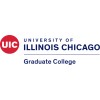
Perceived Social Support, Heart Rate Variability, and Hopelessness in Patients With Ischemic Heart...
Ischemic Heart DiseaseCardiovascular disease is the leading cause of death worldwide, with ischemic heart disease (IHD) the leading cause of cardiovascular mortality. Persons with IHD suffering from psychological distress, including hopelessness, are more likely to die from IHD. Following a stressful event, the vagus nerve enables activation of either a sympathetic (fight/flight) or parasympathetic (rest/digest) response. Heart rate variability (HRV), the beat-to-beat variability between normal successive heart beats, is a biomarker of both adaptive and maladaptive reactions to stress. Decreased HRV predicts greater risk for morbidity and mortality and is associated with poor mental health outcomes in persons with IHD. As stated by polyvagal theory, HRV may be influenced by social support. Decreased perceived social support (PSS), a social determinant of cardiovascular risk, is predictive of increased morbidity and mortality in persons with IHD. Decreased PSS has been associated with hopelessness in patients with cancer, but this relationship has not been studied in IHD beyond the applicant's small pilot study of patients with hopelessness. Hopelessness, a negative outlook and sense of helplessness about the future, is present in 27-52% of patients with IHD. This is of grave concern, because hopelessness is associated with a 3.4 times increased risk of mortality and nonfatal myocardial infarction in patients with IHD, independent of depression. This research focuses on understanding the biological (HRV) and social (PSS) aspects of hopelessness, with the long-term goal of developing and testing novel interventions to reduce the adverse effects of hopelessness and improve health outcomes in patients with IHD. Participants for this cross-sectional study will be recruited while hospitalized for an IHD event. Participants will include patients who report moderate to severe hopelessness from the sponsor's NIH-funded study (n = 225); additional patients with minimal to no hopelessness will be recruited and enrolled by the applicant (n = 45). Data collection will take place remotely two weeks after hospital discharge. Specific aims include: Aim 1) Evaluate the relationship between HRV and hopelessness in patients with IHD; Aim 2) Determine the relationship between PSS and hopelessness in patients with IHD; and Aim 3) Explore the possible mediating effect of HRV on the relationship between PSS and hopelessness in patients with IHD.

Acute Effects of the Prostaglandin (Alprostadil) on Cerebral and Pulmonary Flow
Congenital Heart DiseaseThe second stage operation towards single ventricle palliation is 'bidirectional cavopulmonary connection' (BCPC). The superior vena cava is connected to the pulmonary artery, diverting 'blue' blood from the upper body (including the brain) to the lungs. A successful BCPC requires sufficient and easy blood flow through the lungs. Alprostadil is the synthetic form of prostaglandin (hormone that causes dilation of blood vessels) and has been shown to increase blood flow in the brain hence increasing blood flow to the lungs after BCPC, potentially useful in managing children post BCPC with low flow to the lungs and thus poor oxygenation. This study propose to investigate acute effects of Alprostadil on different blood vessels after BCPC.

Drug-coated Balloons and Drug-eluting Stents in Diabetic Patients
Coronary Heart DiseaseAngioplasty1 moreDrug-eluting stents (DES) have long been recommended as the default device for patients undergoing percutaneous coronary intervention (PCI). Drug-Coated Balloon (DCB) angioplasty is similar to plain old balloon angioplasty procedurally, but there is an anti-proliferative medication paclitaxel-coated on the balloon. DCB angioplasty has the following advantages compared to DES implantation: Firstly, the drug in DCB is uniformly distributed and released, whereas the drug release of DES via the stent platform is uneven -85% of the vascular wall is not covered by the stent strut. Secondly, there is no alloy in the vessel after DCB angioplasty, while the coronary stent platform and polymer might cause temporal or persistent inflammatory response leading to intimal hyperplasia. Finally, there is no metal cage restraining vessel motion after DCB, and the physiological function of coronary arteries would be maintained. Currently, DCB constitutes an important treatment option in ISR, which is endorsed by the 2018 European Society of Cardiology Guidelines on myocardial revascularization. In addition, some interventional cardiologist has also applied DCB in de novo lesions in their clinical practice. Diabetes is associated with worse outcomes after coronary revascularization and has been identified as an independent predictor of adverse events in patients with cardiovascular disease. Although some small sample size RCTs and observational studies have suggested that the clinical prognosis of DCB is non-inferior to the drug-eluting stent (DES), there is still a lack of evidence comparing the DCB versus DES for de novo or ISR coronary lesions in diabetic patients. The current study aims to compare the long-term efficacy of DCB to DES in de novo or ISR coronary lesions in diabetic patients.

Erythropoietin to Prevent Unnecessary Transfusions In Patients With Cyanotic CHD - A Prospective...
Cyanotic Congenital Heart DiseaseAnemia2 moreCyanotic congenital cardiac patients require higher hemoglobin concentrations (red blood cell levels) for optimal oxygen delivery to the body. Prophylactic erythropoietin (EPO) and iron can prevent and/or decrease the amount of blood transfusions needed in this population. We seek to investigate if EPO and iron make a clinically significant difference in the number of transfusions given to these patients and the morbidity associated with it.

Multimodal Analgesia in Cardiac Surgery (Pilot Study)
Heart DiseasesThe investigators objective is to assess the effectiveness of an opioid sparing multimodal approach for enhancing the recovery in Cardiac Surgical patients. This model would use a combination of intravenous (Dexmedetomidine, Ketamine, Lidocaine) and Spinal (Morphine) drugs.

A Clinical Study of the CardiAQ™ TMVI System (Transapical DS)
Mitral InsufficiencyHeart Valve Disease2 moreThe purpose of the study is to evaluate the initial short and long-term safety and performance of the CardiAQ™ Transcatheter Mitral Valve Implantation System using the Transapical Delivery System. The study will enroll patients with moderate to severe mitral valve regurgitation who are considered high or extreme risk for mortality and morbidity from conventional open heart surgery.

Exparel in Minimally Invasive Cardiac Surgery
Cardiac DiseaseThe investigators are presently using Exparel, a slow released local anesthestic, in patients undergoing minimally invasive cardiac surgery. The primary objective of this study is to assess the efficacy of EXPAREL when delivered into the thoracotomy and chest tube sites to provide prolonged postoperative analgesia in patients undergoing minimally invasive cardiac surgery. Efficacy will be assessed by: the effectiveness of analgesia as measured by the subject's overall postoperative pain scores and postsurgical analgesic use.

Obstructive Sleep Apnea Treatment to Improve Cardiac Rehabilitation
Obstructive Sleep ApneaCoronary Heart DiseaseThis is a randomized clinical trial in U.S. Veterans to evaluate the impact of treatment for obstructive sleep apnea (OSA) on the effectiveness of cardiac rehabilitation, including impact on exercise capacity, disability, and quality of life.

Sodium Bicarbonate to Prevent Acute Kidney Injury in Children Undergoing Cardiac Surgery
Acute Kidney InjuryCongenital Heart DiseaseThe proposed study will investigate the effect of sodium bicarbonate on the prevention of acute kidney injury in children undergoing cardiac surgery with cardio-pulmonary bypass. The investigators hypothesize that the occurrence of acute kidney injury will be less in children treated with sodium bicarbonate in the perioperative period when compared to placebo. The specific aims of this proposal are as follows: 1. To institute a prospective, randomized, double-blinded, placebo-controlled trial in pediatric subjects undergoing cardiac surgery to determine the efficacy of sodium bicarbonate on prevention of acute kidney injury as measured by pRIFLE criteria. 2. To examine whether treatment with sodium bicarbonate modifies the duration of acute kidney injury, fluid balance, hospital length of stay, need for dialysis, and progression to kidney failure. 3. To determine the relevance of NGAL as a biomarker to predict development of acute kidney injury.

METHOD - Bone Marrow Derived Mononuclear Cells in Chronic Ischemic Disease
Chronic Ischemic Heart DiseaseIntramyocardial, NOGA guided injection of bone marrow derived mononuclear cells in patients with chronic ischemic heart disease and LVEF < 40%. The primary objective is to determine whether the administration of the cells improves recovery of the left ventricular function. Secondary objective is the finding of clinical or paraclinical parameters to predict potential benefits of the treatment (basing on MRI characteristics such as size, transmurality of the myocardial infarction and peri-lesional ischemia). In the first part of the study 10 patients are treated without control group. This phase serves as feasibility and safety part of the study.
